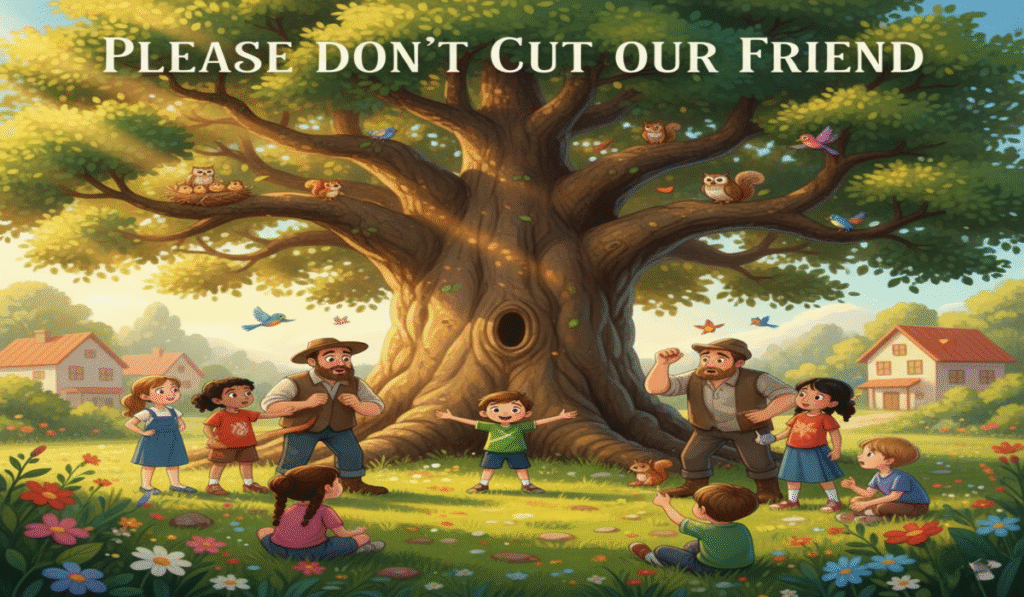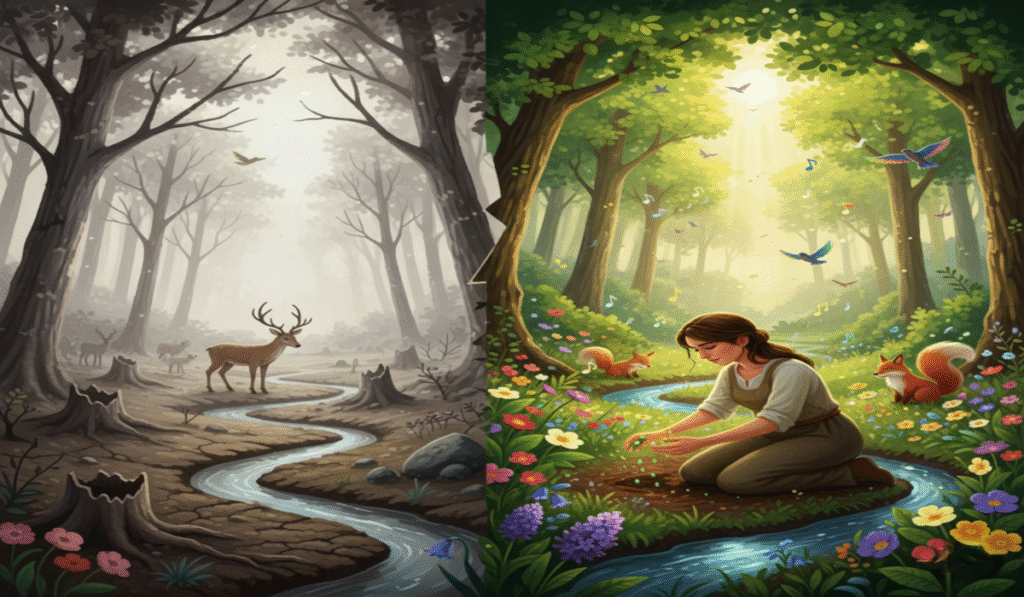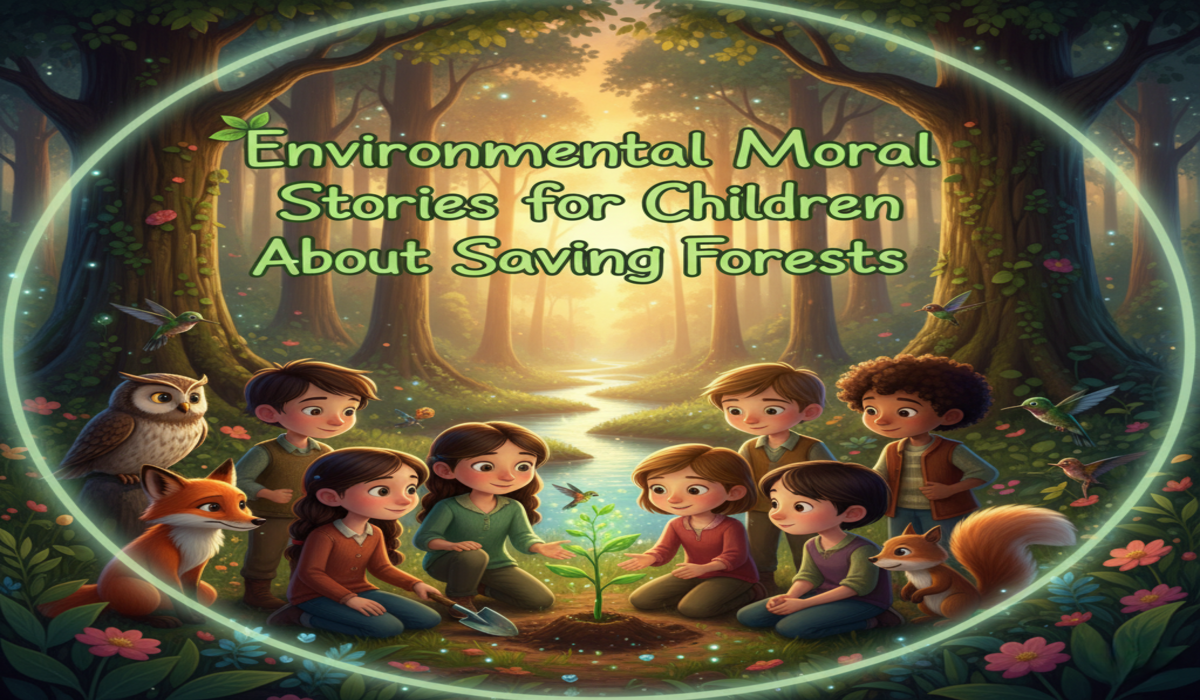Discover inspiring environmental moral stories for children about saving forests that teach kids the importance of nature, kindness to Earth, and protecting our green future.
Table of Contents
Introduction: Why Kids Need Stories About Saving Forests
Forests are referred to as the lungs of our planet. They give us fresh air, color, meals, and a home for endless animals. Sadly, forests are being reduce down every day, and this affects now not best nature but additionally the destiny of children. That is why environmental moral stories for kids approximately saving forests are so important.
Through these memories, children find out how small acts of care and kindness closer to timber and animals can make a massive distinction. Storytelling is the easiest and most effective manner to train values—because kids bear in mind morals better whilst they arrive from a story.
In this weblog, we’ll proportion lovely environmental moral stories for children about saving forests in conjunction with their classes.
Why Environmental Stories Matter for Kids
Awareness from a young age: Kids who read stories about the environment grow up more responsible.
Moral development: They learn compassion, respect, and gratitude for nature.
Practical lessons: Environmental moral stories for children about saving forests show them how even one act, like planting a tree, matters.
Story 1: The Talking Tree

Once in a small village, there was a large tree that gave end result, shade, and a cool breeze to all and sundry. Children played round it, birds nested in its branches, and tourists rested below it.
One day, woodcutters came to reduce it down. A little boy stood earlier than them and said, “Please don’t reduce this tree. It is our friend.” The woodcutters laughed, but when they saw how many youngsters loved the tree, they found out its genuine fee and walked away.
Moral: This Environmental moral stories for children about saving forests teaches that status up for nature can guard it.
Story 2: The Forest That Cried

Long ago, there has been a lovely woodland full of animals, rivers, and plant life. But as people cut trees for timber, the rivers dried, animals left, and the forest became silent.
One kind female planted seeds each day. Slowly, birds back, streams flowed once more, and the wooded area smiled.
Moral: The story suggests children that one person’s efforts can revive nature. Truly one of the maximum touching environmental moral stories for children about saving forests.
Story 3: The Brave Little Monkey
In a dense jungle, human beings began cutting bushes. The animals had been scared due to the fact they were dropping their homes. But a small monkey bravely jumped in the front of the cutters, making loud cries until the villagers noticed.
The villagers understood the animals’ ache and determined to defend the woodland as opposed to destroying it.
Moral: Even small voices rely with regards to saving forests. This is why environmental moral stories for children about saving forests are powerful—they inspire courage.
Story 4: The Seed of Hope
A trainer as soon as gave her students a small seed each. She said, “Take care of it, and you’ll keep the planet.” The kids planted their seeds and watered them every day. Years later, the ones seeds grew into a lush wooded area that stored their village cool and inexperienced.
Moral: Planting even one tree can alternate the future. Such environmental moral stories for children about saving forests inspire kids to take small however meaningful moves.
Story 5: The Boy and the Bird
A boy once captured a bird to keep as a pet. The bird said, “If you truly love me, let me fly. I belong to the forest.” The boy realized the bird’s happiness was in freedom. He released it, and the bird promised to sing for him every morning.
Moral: This story teaches respect for wildlife. Environmental moral stories for children about saving forests also show kids that animals belong in their natural homes.
Lessons Children Learn from These Stories
From the above environmental moral stories for children about saving forests, kids learn:
- Forests are friends, not resources to waste.
- Every small action (planting, saving water, recycling) helps.
- Kindness to animals is part of saving forests.
- Courage is needed to stand up for nature.
- Working together can protect the environment for future generations.
How Parents Can Use These Stories
Parents and teachers can:
- Read one environmental moral story for children about saving forests every night as a bedtime story.
- Discuss the moral lesson after the story.
- Encourage kids to plant trees or join school eco-clubs.
- Use storytelling as a way to connect environmental studies with real life.
The Bigger Picture
When kids grow up with environmental moral stories for children about saving forests, they don’t just research values—they end up caretakers of the Earth. These tales inspire them to see timber as pals, animals as partners, and forests as their shared responsibility.
Conclusion
Forests are treasures that supply life to our planet. By teaching youngsters thru environmental moral stories for children about saving forests, we will raise a technology that values and protects nature. These stories don’t just entertain—they devise young eco-warriors who will develop up to store our inexperienced destiny.
FAQs on Environmental Moral Stories for Children About Saving Forests
Q1. Why are environmental moral stories important for kids?
They construct consciousness, train responsibility, and encourage kids to care for nature from a young age.
Q2. Can stories really influence kids to save forests?
Yes. Children study quality via storytelling as it connects feelings with values.
Q3. What age is best for introducing these stories?
As early as 3–4 years vintage. Simple memories can instill love for bushes and animals early on.
Q4. How can parents make these stories more effective?
By combining stories with real-life movements like planting bushes or touring parks.
Q5. Are these stories suitable for school activities?
Definitely. Schools can use environmental ethical testimonies for kids approximately saving forests in storytelling classes, plays, or eco-day celebrations.

